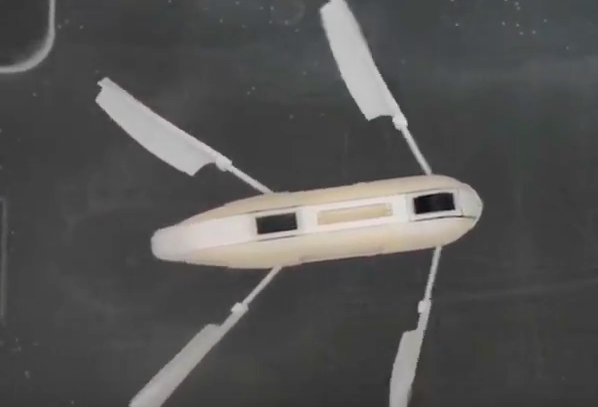Researchers at ETH Zurich and Caltech developed a 3D printed submarine which doesn’t need fuel, electricity, propellant or even an engine. Instead, it exploits temperature changes in the water to complete complex movements.
It’s often said that humans know more about space than we do about the depths of the ocean. It’s certainly true that we’ve read many stories of 3D printing being used for space exploration. However, 3D printing could also prove useful for exploring our seas thanks to a new propulsion concept for swimming robots.
Researchers from ETH Zurich, under the direction of ETH Professor Kristina Shea and colleagues at Caltech in Pasadena, California, created a paddling submarine using 3D printers.
What’s special about this submarine is that it has no power supply, engine or propellant but instead is 3D printed using a shape memory polymer to create muscles which “exploit temperature fluctuations”.
ETH Professor Shea explains: “The main takeaway from our work is that we have developed a new and promising means of propulsion that is fully 3D printed, tuneable and works without an external power source… This could possibly be developed further to create a low-power vessel for exploring ocean depths.”
Exploring the Ocean Depths with a 3D Printed Submarine?
The proof-of-concept submarine developed by the researchers is 7.5 centimeters long and is equipped with paddles. These paddles make the submarine move by using a “bistable propulsion element” which is triggered by two shape memory polymer strips.
The strips expand in warm water and power the robot by acting as muscles. When the submarine floats in water which is heated, its muscles expand and the bistable element snaps – this triggers movement through a paddle stroke.
Due to this feature, the submarine can complete complex movements. The researchers proved the submarine could paddle forward, drop a coin and paddle back to its starting point. This is all done by sensing temperature water changes.
The material and geometry of the submarine define the timing of the stroke as well as the directional motion and even the force. For example, thin polymer strips will heat up faster and respond faster.
Of course, there are still aspects of this project which need work. For example, each actuating element can perform a single paddle stroke. It also needs to be manually reprogrammed.
However, a solution may be to fabricate complex swimming robots with more than one actuator. Another idea is that the researchers could use polymers which don’t react with water temperatures but to other factors. For example, water salinity or acidity.
You can find out more about the researcher’s work by reading the paper in the journal PNAS.
Source: ETH Zurich

License: The text of "Researchers Develop 3D Printed Submarine Which Exploits Temperature Changes to Move" by All3DP is licensed under a Creative Commons Attribution 4.0 International License.